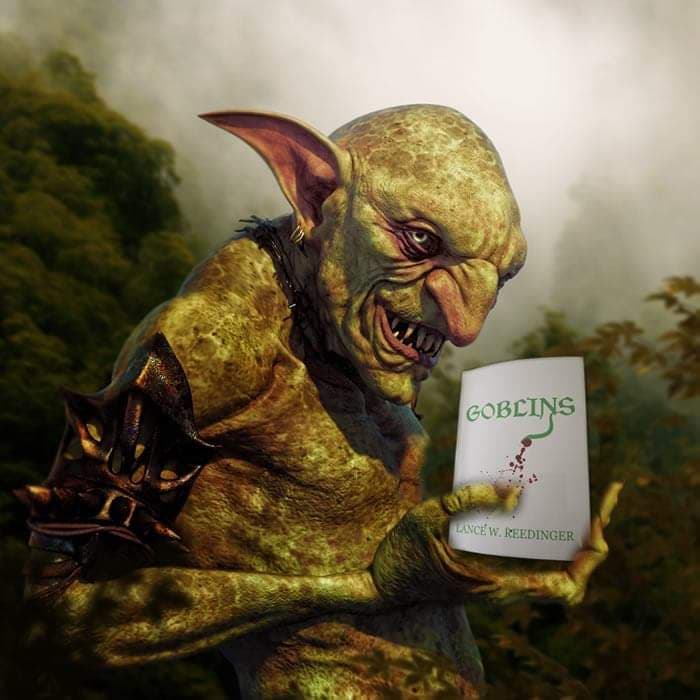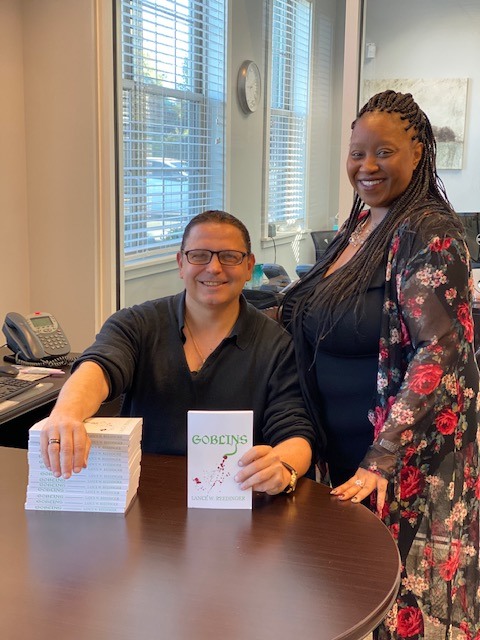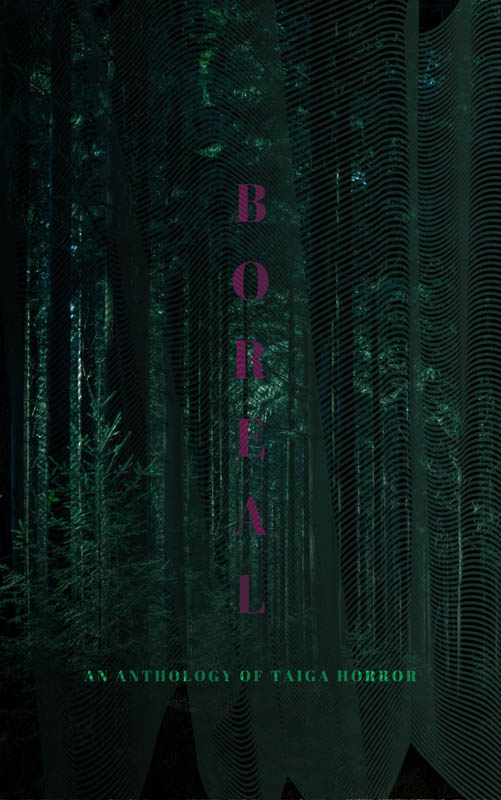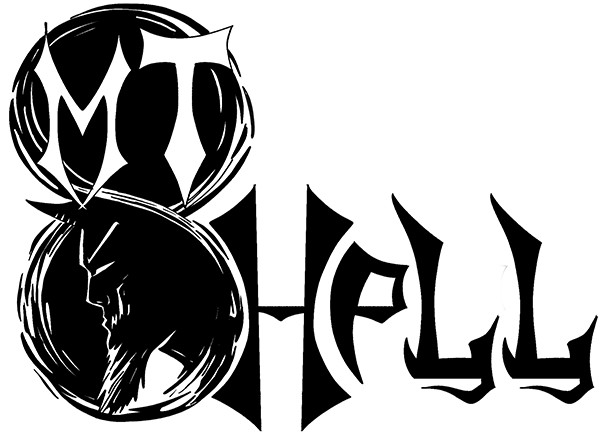
An interview with horror author, Lance Reedingee
Today for your chilling reading pleasure, we have an interview with Lance Reedingee, the author of the creepy horror novella, Goblins.
 |
I love that this story is set in the Appalachians. What made you decide to set your story there?
I live about an hour away from the West Virginian region and have visited the area many times. To be able to location scout the majority of ones work is such a visual advantage. This location is not that far from populated areas but just a few miles in and it becomes otherworldly. Once dusk sets in, the shadows of the mountains engulf the wooded trails and what better place to have monsters lurking in the woods. The small towns that encompass most of the southern Appalachians are charming yet daunting as well. As told in “Goblins” all of these towns seem to hold secrets.
How long have you been working on it?
It was about six months total from outline to finished draft, of course there is a long period of post production that goes after that. For many of my works there is already an outline for categories I want to write, such as: Vampires, Werewolves, Goblins, and other creatures.
What made you decide to write horror?
Growing up in the Eighties, horror became part of pop culture. Many from my generation gravitated artistically toward the horror genre. The primal emotion of fear based art helps to evoke emotion more so than most other genres. As well, horror provides so many sub genres that can be explored. A writer or producer can put out work with elements of comedy, drama, action, all under the setting of horror based art while exploring other creative outlets.
What inspired Goblins?
“Goblins” was defiantly inspired by the Japanese books and film “Battle Royale,” as well as the Spanish film “Intacto.” These works are all contest based horror which has fascinated me. In such works the audience gets to not only enjoy the film or book but examine the piece over and over as contest featured works provide so many different characters and points of view. Works such as “The Hunger Games” and “Lord of the Flies” are enjoyed over and over as they can be read or viewed thru different perspectives from all of the different narrative points. To write contest horror is a lot of fun, but the attention to detail and timeline of events is very difficult to keep up with.
Was it an active decision to write a novella?
My publisher has a great game plan for all of her artist which I really bought into. The team at Boutique41 implements a start small and grow philosophy. They encourage a novella in form of the atypical twenty to twenty-five thousand words to start, which was where “Claws” fell under. “Goblins” needed to be over the forty-thousand word mark making it officially a novel, though on the short end of the word count stick. Both works were well over that count at first draft and then we went to work on narrowing the narrative to give the reads great pace. In particular when writing to a North American base, you have to keep the story rolling. I love this philosophy of word counting in getting started. Way too many writers begin with their epic works and spends years working on a project that may never find a proper outlet and they just give up. My advice is to start small and build, if you can write a short you can write a novella, if you can write a novella you can write a novel.
Is there a horror novel or movie that really scared the hell out of you as a child?
As a Catholic of course “The Exorcist” comes to mind for myself and just about everyone who has ever viewed the film. Wes Craven’s “Last House on the Left” is probably the film that scared the hell out of me the most. The horror community worships the Eighties but the films of the Seventies were so brutal and shot almost as snuff projects that the violence is shockingly lifelike. Craven and other artist had to rely on creativity and live props as opposed to modern FX, which brought out many kill scenes that look absolutely real. We all love monsters and creatures but as in “Last House on the Left,” human monsters could be the person walking past you in the park which is scarier than any monster of myth. I read ‘IT” at a very young age and lived in a suburban neighborhood, so as per written work, that is the book that scared me the most and inflicted a serious distrust of clowns.
This is your second book. How did working on it differ from writing Claws?
“Goblins” is a much longer and more intricate work than “Claws.” The major difference was the amount of characters and settings in the work. A good exercise is to have a biography written of each character to reference during the project. “Claws” was one long setting with a classic two person point of view where as “Goblins” takes place in over a dozen settings with several characters sprinting to a conclusion. The major difference while writing “Goblins” was to go back and have to reexamine that motives of each characters as the story progressed.
What do you think your favorite part of Goblins is?
There is a Goblin attack in chapter two that is my favorite work of the book. Since the story plays as a action thrill ride horror, this attack is straight old school horror at its core and was so fun write. I got a little carried away and we did have to edit it to make the scene a tad less brutal but that chapter is by far my favorite and I have gotten a lot of great feedback from the horror community from it.
What do you see in the future for your career? Are you working on any new stories?
My current publisher gives all of her artists a game plan and I am now on step three. I have just started the outlinefor my next work with a contract to have over Eighty-Thousand words for a full blown novel. Each work is personal as I try to leave my mark on all of the horror tropes. “Claws” was a sea creature, “Goblins” is contest horror and this year I am working on a Vampire piece. Eventually I would like to do a series which could best be described as the “Game of Thrones of Horror.” I think the one thing the genre is lacking is an epic work filled with many monsters, perhaps the closest thing to attempt that is the Russian novels “Night Watch,’ or the Polish books “The Witcher.” I would like to remove some of the more fantasy based elements of these great works and put out a straight horror epic series.
Where can our audience find you?
Like many authors, I can be found on Amazon with links to all of my works. As well as my publisher’s site, Boutique41publishing.org. I am also listed on Goodreads and Barnes and Noble online. If you are a fan of all horror, I contribute to horror-nation.com with weekly articles and film and literature reviews.

Book Reviews
A Stellar Debut Novel, We Used To Live Here
Imagine this. You’re home alone, waiting for your partner to return, when you hear a knock on your door. You answer it to see a family of five, bundled up against the cold. The father, a kindly older gentleman, explains that he used to live in this house as a boy. And he would love to show it to his family.
Do not let them in.
The story
Released in June 2024, We Used To Live Here is author Marcus Kliewer’s debut novel. It tells the story of Eve, who just purchased a beautiful house with her partner, Charlie. Their plan is to flip the house and sell it.
One night, while waiting for Charlie to come home, Eve is surprised by a knock at the door. It’s a man named Thomas Faust and his family.
Thomas explains that he grew up in the house and hasn’t been in the area in years. Would Eve let them in so that he can show the home to his children?
Against her better judgment, Eve lets them in. She regrets this almost at once when Thomas’s daughter vanishes somewhere into the house.
What worked
I always appreciate a book that allows you to play along with the mystery. And this book does that better than just about any other I’ve seen.
Pay close attention to the chapters, to the words that aren’t there. To everything about this novel.
This is mostly down to Kliewer. This is ultimately his work of art. But the production value is also fantastic. I don’t want to ruin the multiple mysteries, so I’ll just say this. There are clues in this book that require some specific artistic choices in the page layouts in this book. And I loved that.
If you’d like to experience another horror book review, check out this one.
We Used To Live Here is also the kind of story that makes you question everything right along with the main character, Eve. Eve is a great main character. But she might be an unreliable narrator. She might be experiencing every single horror described, exactly as it’s described. Or, she might be having a psychotic breakdown. Through most of the book, we can’t be sure. And that is so much fun.
Finally, the weather plays a large part in this story. There are several stories in which the weather or the land itself could be considered a character. Even an antagonist. This is certainly one. The winter storm is the thing that traps the family in the house with Eve. It also makes escaping the home difficult. Reading this book during the winter was especially impactful. Most of us know what it feels like to be shut in by a storm. I’ve personally lived through some of those storms that are just referred to by their year, as though they were impactful enough to claim the whole 365 days for themself. And that was with people I liked. Imagine what it would feel like with strangers. It’s a staggering thought and one that we explore in depth in this book.
In the end, We Used To Live Here is a fantastic book. It’s the sort of story that sneaks into your brain and puts down roots. And if this is just the first book we’re getting from Kliewer, I can’t wait to see what else he comes up with.
 (5 / 5)
(5 / 5)
Book Reviews
Exploring real terror with The House of My Mother
As a disclaimer, this is a review of The House of My Mother from a critical perspective. I will not be discussing my opinions of the legal case against Ruby Franke and Jody Hildebrandt. I will be discussing the merits of the book as a work of true crime alone.
In 2015, Ruby Franke started a YouTube channel called 8 Passengers. In August of 2023, Franke and her business associate Jodi Hildebrandt were arrested for, and later plead guilty to, charges of aggravated child abuse. And in January of this year, Shari Franke told her story in The House of My Mother.
The story
The House of My Mother is the true story of Shari Franke, the oldest child of one of the most famous family vlogger families.
As a child, Shari came to the conclusion that her mother didn’t like her. Soon, she began to fear her mother’s anger.
Things got significantly worse when Ruby started their family vlog. All of the families most intimate moments were splashed across the internet for anyone to watch. This became a living nightmare for Shari.
Of course, that was only the start of the family nightmare. Because Ruby was about to meet someone who would reinforce all of the darkest parts of herself.
Eventually Shari manages to escape her home. But her younger siblings were still in her mother’s clutches. She had to save them, and her father, from the monster her mother had become.
What worked
Through the book, Shari only ever mentions the name of one of her siblings, Chad. This is because Chad is the only of her siblings that is an adult at the time of the publication.
There are children involved in this story. Children who’s lives and privacy have already been damaged. Shari didn’t want to do that to them again, and neither do I.
It probably won’t surprise you that this book is full of upsetting details. But not in the way you might imagine.
Nowhere in this book will you find gory details about the abuse the Franke kids suffered. And I consider that a good thing. Those sort of details are all fun and games when we’re talking fiction. When it’s real kids who are really living with the damage, it’s not a good time.
What you’ll find instead is a slew of more emotionally devastating moments. One that stuck with me is when Ruby’s mother gives her a pair of silk pajamas as a gift after Ruby gave birth to one of her babies. Shari asks Ruby if she’d bring her silk pajamas when she had a baby. Ruby responds that yes, when Shari becomes a mother they can be friends.
What a lovely way to make a little girl feel like she’s not worth anything unless she reproduces. And, if she does decide to have children, who is going to bring her silk pajamas?
In the end, this isn’t a story about ghosts or demons. It’s not about a serial killer waiting on a playground or in the attic of an unsuspecting family. Instead, this is a story about things that really keep us up at night. It’s the story of a woman so obsessed with perfection that she drove away her eldest daughter. The story of a young woman who’s forced to watch from afar as her beloved brothers and sisters are terrorized and abandoned. These are the sorts of things that really keep us up at night. These are the real nightmares.
More than that, though, The House of My Mother is a story of survival. It’s about a family that was ripped apart and somehow managed to stitch itself back together again. It’s about a brave young woman who managed to keep herself safe and sane in the face of a nightmare. If you haven’t read it yet, I can’t recommend it enough.
For more like this, check out my review of Shiny Happy People.
 (5 / 5)
(5 / 5)
Book Reviews
Book Review of Boreal: an Anthology of Taiga Horror

Boreal: an Anthology of Taiga Horror is a collection of twenty-two haunting tales that dwell in the deepest darkest woods and frozen wastelands, edited by Katherine Silva and including Haunted MTL’s very own Daphne Fauber. Each story has even been gifted with its very own poster, hinting at the horrors to be found within it, bestowing a beautiful visual collection as well.
The tales are varied and touch upon the environment in new and different ways, each hearkening to a sort of epiphany or raised awareness. These stories exude both dread and wonder at the smallness of our human existence in contrast to the sacred world we have isolated from, sheltering ourselves in our comfortable houses with centralized heat and everything we could possibly need or want at the ready. The taiga becomes a sanctuary outside of our own dulled awarenesses. It is a holy place imbued with powers beyond mortal human reach, a wilderness that threatens to swallow us – both whole and bit by bit, simultaneously.
The protagonists enter into this realm through ritual, superstition, longing, stubbornness, and their own hubris – yearning to survive its dangers, and to make their own marks upon it. The starkness of their surroundings harbors delicate moments that would be all too easily missed if not deliberately sought or pointed out. The softness of fur, the dappled sunlight shining through trees, the hazy clouds of breath forming in crisp air, the brittleness of bleached bone… those quiet experiences that beg to be forgotten, to lay safely sleeping just below the frozen surface, awaiting spring.
There are those who followed in the footsteps of their predecessors, seeking to escape the constraints of their parent’s and elders’ indoctrination, traditions, madness, and abuse, yearning to find their own way despite also being inextricably bound to their own pasts. There are those who just wanted to go for a walk in the woods, and remained forever changed by what they experienced. There are those who wished to impose their will upon the wilderness, their order falling to disarray, unable to make lasting impact. There are those who sought to leave behind the world of mankind, looking for oneness in the natural order of things through isolation, leaving a bit of themselves behind after being consumed by the terrors they encountered. There are those who truly found communion with the woods, became one with its wildness, and invited its spirit into their hearts to find peace, even at cost of their own lives. And then, there are the spirits themselves…
 (3 / 5)
(3 / 5)
All in all, I give Boreal: an Anthology of Taiga Horror 3.0 Cthulhus. I love existential angst so I found it to be an enjoyable read, and I appreciated the myriad manners in which the biome was explored. But there were points in which I found myself struggling to follow along, as if the words were swept up into their own wilds in ways that alienated myself as reader, as if my mere voyeurism into this otherworldly place was not enough to comprehend the subtle deviations in storytelling mannerisms fully. I suppose in some sense this seems appropriate, but at the same time, it left me feeling a bit unfulfilled, as if I had missed a spiritual connection that should have resonated more deeply.

